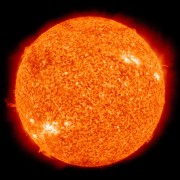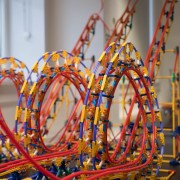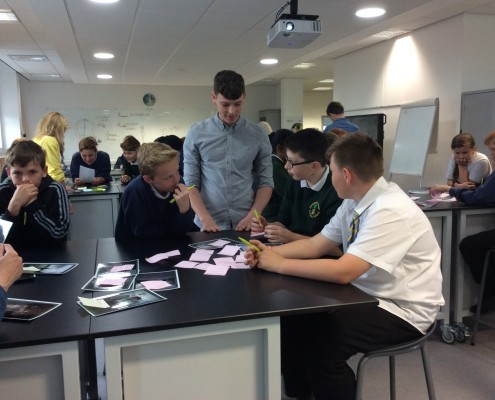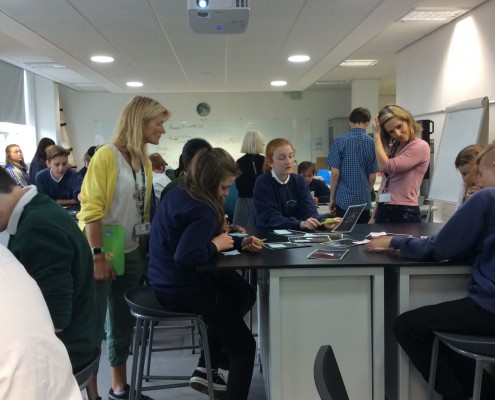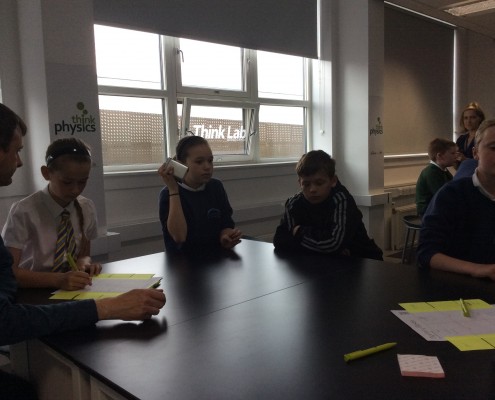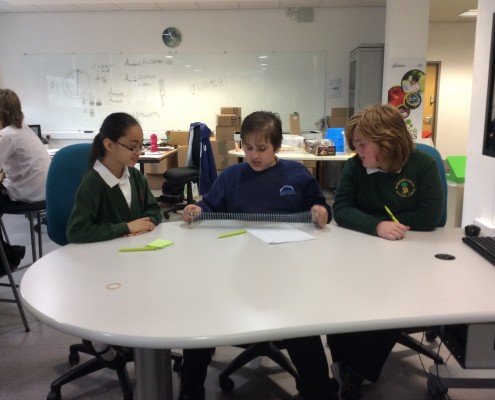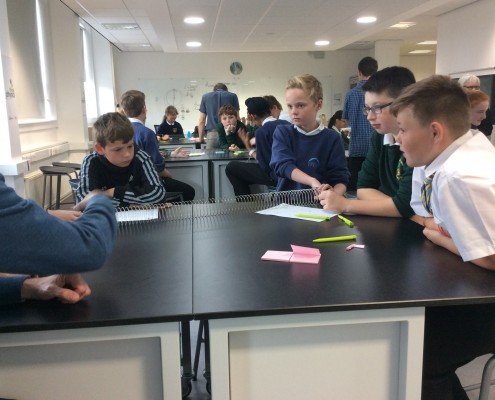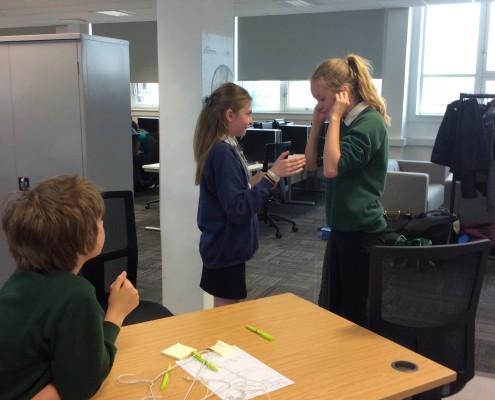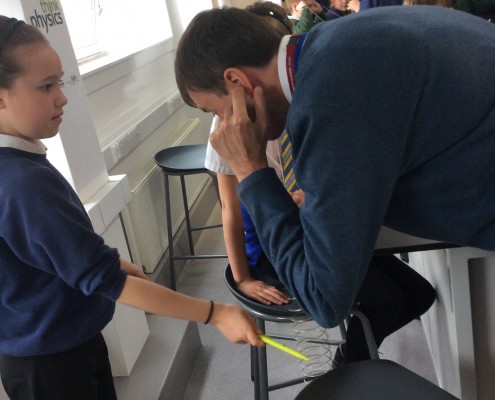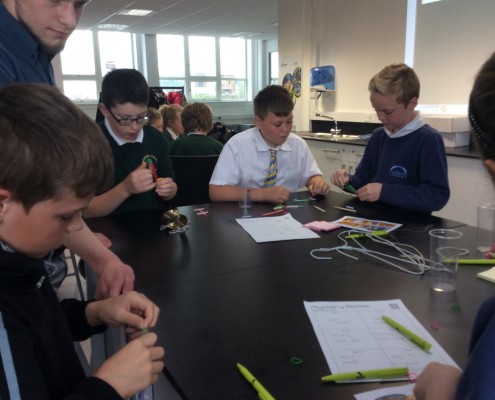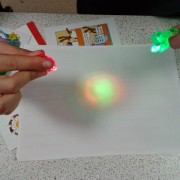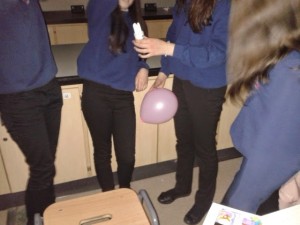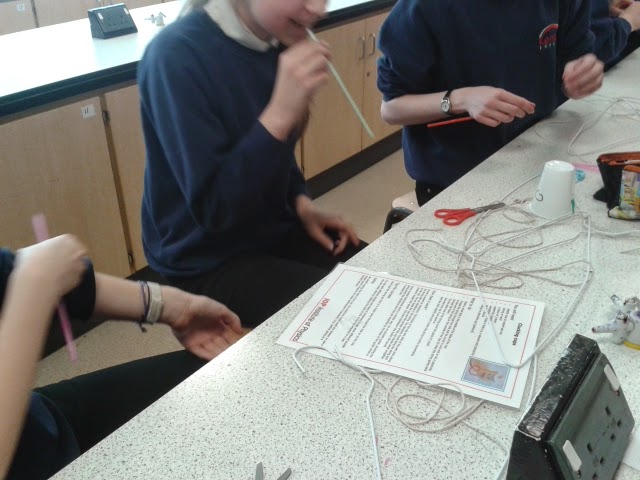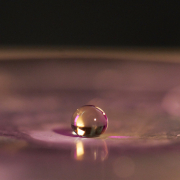Kenton School
Hello Kenton! Over the next few years we hope we’ll see you often. We’ll bring you the most fascinating, surprising, and challenging things we can think of, and together we’ll explore the world around us. We’ll look at how things work, how they behave, and how you can build things that behave as you want them to.
We also hope you’ll visit us at our base, Think Lab in Northumbria University, where we can go even further in thinking like scientists and engineers.
Below, you’ll find a summary of the things we’ve done with you so far. Click around – you might just spot yourself in one of our galleries.
You:
Us:
6th January: Explore your Universe
Happy New Year, Kenton! What a great way to start the year; exploring the universe from the incredibly tiny to the unbelievably large. You can find out more about very tiny or very large things using this The Scale of the Universe animation. I could spend all day zooming in and out. We talked about protons, neutrons and electrons today, but we didn’t mention the even smaller particles that they are made of. Have an explore. Did you spot the transistor gate that’s about the size of a virus? These are what give your phone its processing power. Current transistors are as small as 7nm – that’s 0.000007mm. The smaller they are, the more we can pack onto a microchip and the more processing power we can get. However, it looks like we might struggle to make them any smaller. As we get smaller we enter the realms of “quantum tunneling” which can cause all sorts of problems. To prevent this, we may have to start making our chips out of something other than silicon. (I like mine made out of potato! ba-dum-tish!)
One option might be a new material invented in Manchester called Graphene. It is only a single atom thick and could be used to make even smaller transistors. It’s super light and super strong and is changing the way we design and construct new products. If you want to get a glimpse of the material of the future, look here.
We also looked at the International Space Station, which you can watch, live, here. If you want to see the ISS fly overhead, use the tracker website here. You can give Tim a wave, and if you tweet him first (@astro_timpeake), he might just wave back!
9th December: More Rollercoasters
This morning, I was back at Kenton for some more K’nex rollercoaster building. There’s a lot that goes into building a rollercoaster, and we only just scratched the surface. For more details, head over to our workshop notes page where you’ll find videos, games, and more information than you can shake a (K’nex) stick at. Now if you’ll excuse me, I have six rollercoasters to dismantle and put back into the correct boxes. Sigh.
4th December: Rollercoasters
How many people does it take to build a rollercoaster? It’s no joke; today we looked at the range of specialists needed to design and construct a rollercoaster, all so that you can get your fix of adrenalin at the local theme park.
I’ve written up some more information on our roller coasters activity page, with a few videos that are worth watching and links to some design-your-own games.
Kenton Peer Tutoring
This morning Think Physics hosted year 7 students from Kenton School and year 6 students from a number of primary schools.
During the morning, we thought about what j0bs can be done if you study science by looking at photos of different people. There were some very surprising people, including a snowboarding mechanical engineer. You can see the pictures here.
We also tried to work out what were in some ‘mystery boxes’. There was a lot of shaking and listening going on. This activity reminds us that science doesn’t know all the answers. We talked about how science is all about:
- suggesting ideas and testing them
- discussing and explaining
- being creative
- working with others
Next came sound. The year 7 pupils explained to their year 6 partners how sound travels through the air, and they modeled what a sound wave looks like.
We heard how sound travels differently through the air and through solids using a coathanger and a slinky spring. Do ask for a demonstration!
Finally we made loud lollies and sorry if that’s already drive you up the wall. We used them to discuss how you would plan an investigation, and how to control all the factors that might affect our results.
A Bright Bunch of Students
Following the previous science buskers’ training session, the group thought that light would also be a good topic. So in this session, they tried out experiments to do with light. The groups investigated beads and loom bands that change colour under UV light – or outside in the sun. We also looked at mixing different colours of light and how it is different to mixing colours using paint.
2015 is the International Year of Light, and the Institute of Physics have produced a set of experiment cards you can try at home. We explored quite a few of these.
We were really surprised to be able to light an energy-saving lightbulb using static from a balloon (right).
Science buskers – Sounding Good
In the first session, we tried out a bunch of activities to investigate sound. We made different instruments from coathangers, a slinky spring, straws, plastic cups and lolly sticks and looked at different ways to amplify sound.
Physics things to make you go ‘Hmmm’
This morning 22 year 9 students from Kenton visited Think Lab. They tried out a range of simple activities, all of which encouraged them to ‘Do Physics!’ Some of the explanations used physics ideas that they had met before, but some required them to think about topics which they won’t meet until A-level physics (or beyond). All were chosen to make the students go ‘Hmmm’ and think hard about what they had observed.
One of the activities was dropping different balls to see which reached the ground first. They had two tennis balls, one of which was filled with water. Lots of the students predicted that the heavier ball would fall faster.
It didn’t. Although it was hard to spot visually, when we listed for the balls hitting the ground, they bounced at the same time. This was quite surprising! Part of the reason for this is that ‘common sense’ tells us that heavier things fall faster. And if air resistance becomes a significant factor, then we do find that heavy things fall faster. The tennis balls take air resistance out of the experiment, and then the balls fall at the same rate.
A slightly larger demonstration of this phenomenon was done by Professor Brian Cox using a giant vacuum chamber.
Another very popular activity was looking at water beads, or hydrogel beads. These are a water absorbing polymer. When they are dropped into water, they disappear.
You can buy water beads online, or from florists shops.

